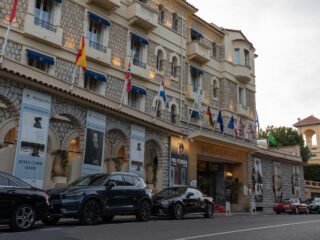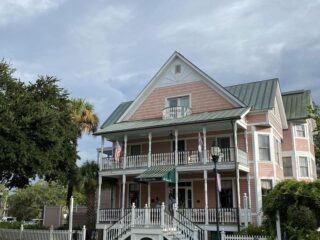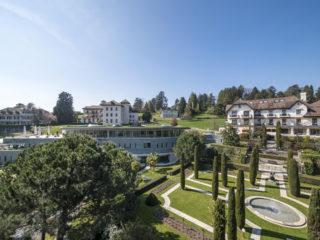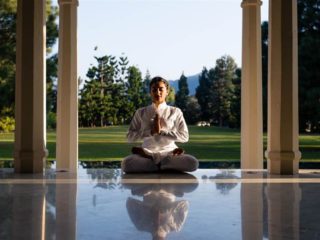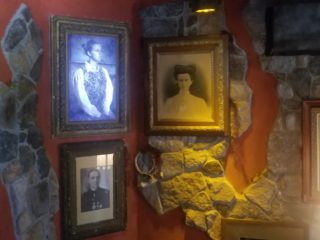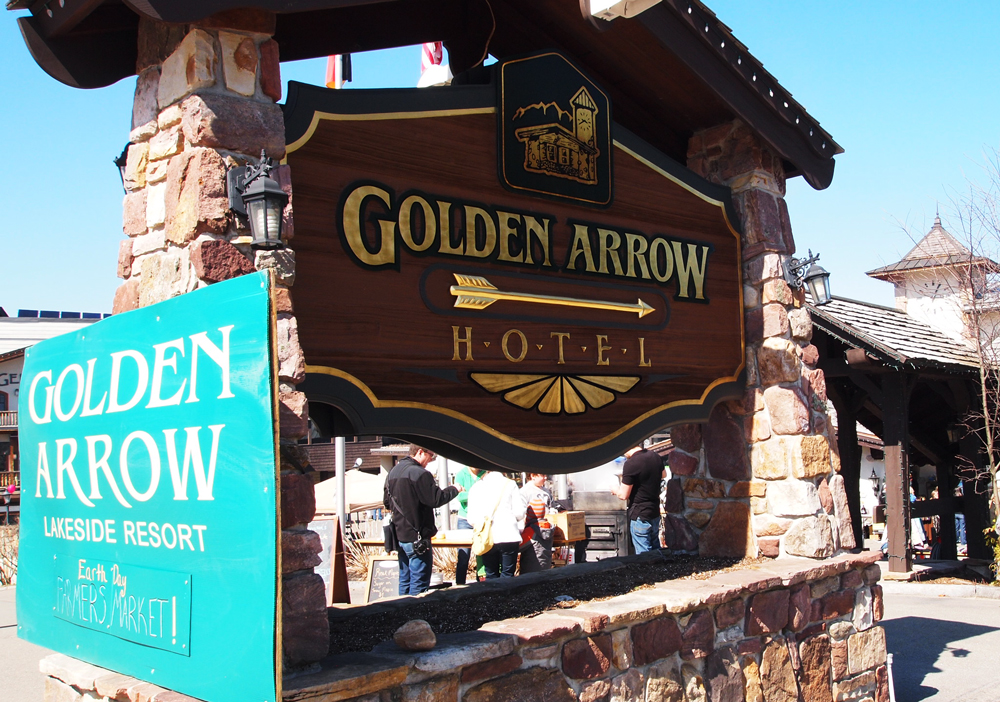By Sandra Jackson- Opoku
Central London is fairly quiet when we put down at Albemarle Street. Yet an even deeper hush settles on the morning when a top-hatted doorman bustles out with an upraised umbrella and ushers us into another century.
The reputation of Brown’s Hotel precedes it, if the fact sheet we read back home in Chicago is any indication. “At which hotel do you stay in London?” one gentleman supposedly inquired of another. He allegedly replied: “I don”t stay in a hotel, I stay at Brown’s.” So far the place seems to be living up to its PR with its genuine antiques, marble floors, and rich woods.

In the immortal words of Rudyard Kipling: “In due time I found my ghost, or ghosts rather, for there were two of them.” One can easily imagine Kippie’s bald, bespectacled ghost waltzing past to sip tea in the drawing room, or Edwardian nobility supping on pheasant and quail in the oak-paneled Grill Room. A gentleman’s gentleman in tie and tails might glide forward at any moment with a courtly bow and a “James Brown at your service.” And no, this phantom would not be a recently departed Georgia gentleman known as The Hardest Working Man in Show Business. Maybe we could call his namesake “The Godfather of Sole,” for all the many shoes that he undoubtedly buffed and polished.
Neither the long departed Rudyard Kipling nor James Brown I are in evidence today. A staff made up largely of Eastern European immigrants is warm and gracious, and the hotel’s vintage charm is updated with all the modern amenities. Thank goodness for the 21st century when two jet-lagged black travelers are not likely to be shown to the back door, if not the door of a five-star hotel. We check into a fully-appointed suite and nap away the morning on Egyptian cotton sheets.
As London’s oldest hotel, Brown’s has been steeped in literary heritage since its doors opened in 1837. These were Dickensonian days of Oliver Twist and the Artful Dodger, workhouses and debtor’s prisons. A position as butler to an aristocratic poet would have been a decent job for any working bloke, though not without its challenges. George Gordon, Lord Byron of “She Walks in Beauty” fame was notoriously temperamental (his estranged wife pronounced him insane), his marriage brief and tumultuous. Small wonder that James Brown yearned to be his own man. Thirteen years after Lord Byron’s death he finally realized this dream.
Brown and his wife Sarah (Lady Byron’s former maid) acquired four adjacent town houses on Dover Street where they would run an inn for the nobility and gentry for the next 21 years. In 1859 they retired, though the hotel would always bear their name.

The interior of Brown’s Hotel is much deeper than it appears from the outside. James John Ford, who took over from the Brown’s extended it to St. George’s Hotel on Albemarle Street, which backed onto the Dover Street property. In the late 1880s he installed bathrooms, electric lights, and one of the first elevators in Britain. He also instituted a practice that would change the dining habits of London hotel guests. Though Brown’s had its own kitchen, the gentry took meals in their rooms until Ford opened the first public dining room in a London hotel.
As it changed hands over the years Brown’s would welcome its share of literary guests. I find an odd intimacy in exploring the haunts of other writers, even those with questionable politics like India-born Rudyard Kipling, cheerleader of British imperialism. He is the one who waxed eloquent with racist piety in his poem “The White Man’s Burden.” E. F. Benson would write about him: “Then there was Rudyard Kipling, with the gorgeous East and the British Empire rattling like loose change in his trouser pockets.”
Kipling honeymooned at Brown’s with his American bride in 1892, returning many times over the next forty years. On at least one of those visits he worked on The Jungle Book. A roomy suite overlooking Albermarle is now named in his honor. Until recently The British Kipling Society held its regular meetings there.
Agatha Christie was also a frequent visitor. It was she who popularized the “murder mystery at the inn” genre, immortalizing Brown’s in her thriller At Bertram’s Hotel. The hotel is now a stop on several Agatha Christie-themed literary tours of London.
Rudyard is not the only writer to work in the spacious Kipling Suite. Stephen King holed up there the early 1980s. The master of horror was so spooked by offhand remarks by a night concierge that he reportedly quit the hotel. It does sound deliciously gruesome, but the story that King handwrote Misery at the same desk where 70-year-old Rudyard died face down is somewhat apocryphal. Yes, Kipling was stricken with a perforated ulcer in 1936 while overnighting there en route to Cannes. But he was still alive when transferred to Middlesex Hospital, where he died shortly after surgery.
Kipling was said to have presaged his own death with unintended irony. The story goes that the head porter of the hotel, a man with the Dickensonian surname of Nice asked Kipling to sign his copy of the novel, The Absent Minded Beggar. The author reportedly humored him with an autograph and a joke: “You take that home and lock it away until I am dead. It will be worth a lot of money then.”
Brown’s has also opened its doors to the likes of Robert Heinlein, author of Stranger in a Strange Land, Irish novelist and BBC broadaster Frank Delaney, and the imminent (ahem) travel writer/novelist Sandra Jackson-Opoku not eminent as in “great,” but imminent as in “I’m coming!” Of course, it is not only writers who have graced these elegant rooms. Brown’s was the site of Alexander Graham Bell’s first European phone call. Politicians like Theodore Roosevelt, Cecil Rhodes, and Emperor Haile Selassie slept there. King George II of the Helenes settled in for nine whole years after his exile from Greece in 1924.
Brown’s Today
Those were the glory days of old. After multiple changes in ownership Brown’s eventually sank into genteel decline. Taken over by Rocco Forte (a group known for its fine European boutique hotels), shuttered and refurbished, it has now recaptured its reputation as one the top hotels in London. Brown’s prides itself on its international clientele, a heady mix of American, British, European, and Arab barons of industry, as well as a celebrity lineup of the likes of Sasha Baran Cohen, Cher, and Andre Agassi.
A pleasant surprise is the jazz music that forms an unexpected counterpoint to the period grace of Brown’s public rooms. A live trio plays Sunday lunch at the historic Grill Room, serving “a delicate balance of English fare and continental cuisine with a modern influence.” The rhubarb soup sounded so strange I had to try it, and found it surprisingly palatable. Refraining from the generously flowing champagne at High Tea, we munched finger sandwiches, crumpets, and scones with clotted cream while a smooth jazz pianist tickled the ivories in Brown’s English Tea Room. We did not get to take in the nightly live jazz at the Donovan Bar, a vision of black leather decked out in black and white prints by late British fashion photographer Terence Donovan.
Alas, I will not be in attendance for Brown’s 170th anniversary events toward the end of 2007. However much I might fantasize about checking into the Kipling Suite to pen “The Black Woman’s Burden,” at £2700 a night (over $5000 US), poetic justice might be a wee bit pricey.

